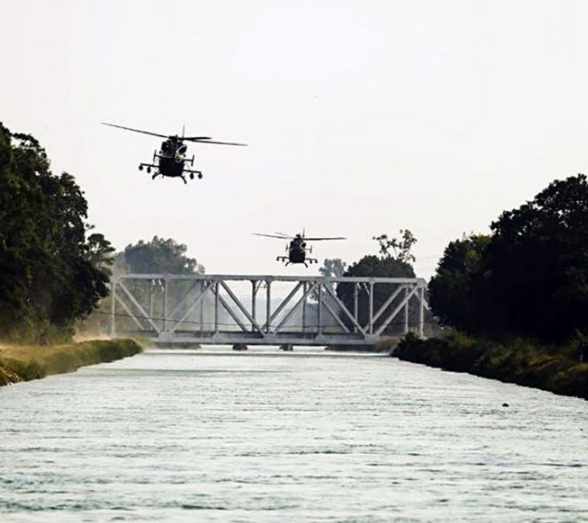Gagan Strike-II Joint Exercise: Enhancing Military Capabilities Through Integration and Validation (GS Paper 3, Defence)

Introduction
- Gagan Strike-II, a recent joint military exercise conducted by the Indian Army's Kharga Corps and the Indian Air Force (IAF), showcased the integration and validation of tactical capabilities in Punjab, India.
- Designed to refine operational processes and enhance coordination between ground and aerial units, the exercise aimed to bolster India's defense preparedness in the region.
- With a focus on utilizing assets such as Apache helicopters and special forces, Gagan Strike-II underscored the importance of synergy between different branches of the military in addressing contemporary security challenges.
Objective
- Gagan Strike-II, a three-day joint military exercise, served as a platform for the Indian Army's Kharga Corps and the Indian Air Force (IAF) to refine their operational processes, strengthen coordination, and validate the deployment of attack helicopters in developed terrain.
- The exercise aimed to bolster India's defense capabilities, particularly in the context of its strategic positioning vis-à-vis neighboring countries.
Key Highlights:
1. Integration of Assets:
- Gagan Strike-II emphasized the integration of various military assets, including Apache and ALH-WSI helicopters, Unarmed Aerial Vehicles (UAVs), and the Army’s special forces.
- This integration aimed to optimize the effectiveness of both ground and aerial units, ensuring seamless coordination during combat operations.
2. Combat Simulation Scenarios:
- Throughout the exercise, participants engaged in a series of combat simulation scenarios designed to mimic real-world battlefield situations.
- These scenarios tested the ability of participating units to respond swiftly and effectively to dynamic threats, highlighting the importance of synchronized efforts between ground troops and aerial support.
3. Role of Kharga Corps:
- As the leading force behind Gagan Strike-II, the Kharga Corps showcased its expertise and readiness in executing complex military maneuvers.
- Established in 1971 and headquartered in Ambala, Haryana, the Kharga Corps, also known as III Corps, holds a pivotal role in India's defense strategy, particularly in operations against Pakistan.
- Its rapid mobilization capabilities and offensive positioning make it a formidable force in maintaining India's territorial integrity and sovereignty.
4. Utilization of Apache Helicopters:
- A notable feature of Gagan Strike-II was the utilization of Apache helicopters, renowned for their versatility and firepower.
- Developed by McDonnell Douglas (now Boeing), the AH-64 Apache is equipped with a 30mm M230 chain gun, Hydra 70 rocket pods, and AGM-114 Hellfire missiles, making it a formidable asset for destroying enemy armor and fortifications.
- The integration of Apache helicopters into the exercise underscored the importance of aerial firepower in modern warfare scenarios.
Conclusion:
- Gagan Strike-II exemplified the Indian military's commitment to enhancing its operational capabilities through integrated training exercises.
- By fostering interoperability between ground and air forces, the exercise aimed to strengthen India's defense posture and readiness to address evolving security challenges.
- As geopolitical dynamics continue to evolve, such joint exercises play a crucial role in maintaining regional stability and safeguarding national interests.


